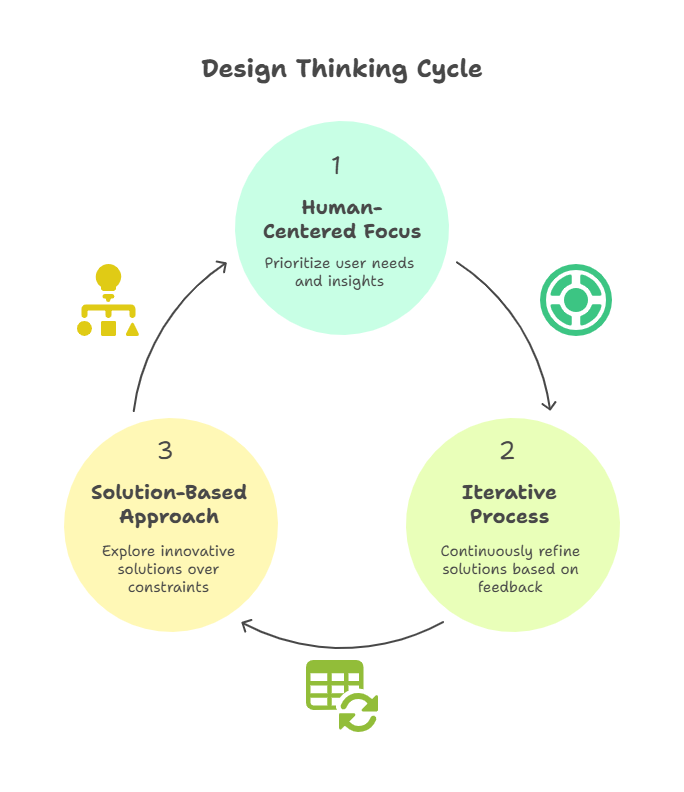What Is Design Thinking? A Human-Centered Problem-Solving Framework
Discover how design thinking's human-centered approach helps teams solve complex problems through empathy, iteration, and innovation.
What Is Design Thinking?
Design thinking is a human-centered approach to innovation that helps teams solve complex problems through creativity and collaboration. According to Tim Brown, Executive Chair of IDEO, it's an approach that integrates the needs of people, the possibilities of technology, and the requirements for business success. Unlike traditional problem-solving methods that focus on constraints, design thinking emphasizes solution-based thinking and user-centric approaches.
This methodology has evolved from its origins in the 1970s when Don Koberg and Jim Bagnall pioneered a soft systems design process for dealing with everyday life problems. Today, it's widely adopted across industries because it provides a structured yet flexible framework for tackling ambiguous challenges.
Core Principles of Design Thinking

Human-Centered Focus
At its core, design thinking is fundamentally human-centered. It encourages organizations to focus on the people they're creating for, which leads to better products, services, and internal processes. This principle ensures that solutions actually address real user needs rather than assumed problems.
Iterative and Non-Linear Process
Design thinking is inherently non-linear and iterative. Teams move back and forth between phases as they learn more about users and refine their solutions. This flexibility allows for continuous improvement and adaptation based on new insights.
Solution-Based Approach
Unlike traditional methods that focus on problems, design thinking is solution-based rather than problem-based. This mindset shift encourages teams to explore possibilities and create innovative solutions rather than getting stuck analyzing constraints.
The Design Thinking Process
While different organizations may use slightly different frameworks, most follow a similar progression:
- Empathize: Understand user needs, behaviors, and pain points through observation and engagement
- Define: Synthesize research findings to frame the core problem clearly
- Ideate: Generate a wide range of potential solutions without judgment
- Prototype: Create tangible representations of potential solutions
- Test: Gather feedback from users and refine solutions based on insights
This process isn't strictly sequential—teams often cycle back to earlier stages as they learn from testing and prototyping.
Why Design Thinking Matters for Professionals
Design thinking provides a structured approach to innovation that's particularly valuable for product managers, marketers, and consultants. Harvard Business School notes that developing communication, innovation, leadership, research, and management skills alongside design thinking can enhance professional effectiveness across roles.
The methodology helps teams:
- Challenge assumptions and reframe problems
- Develop deeper user understanding
- Foster collaboration across disciplines
- Reduce risk through rapid prototyping
- Create more innovative and user-friendly solutions
Visualizing Design Thinking with Mind Maps
Design thinking's iterative nature makes it ideal for visualization tools like mind maps. The non-linear process benefits from visual frameworks that show connections between user insights, ideas, and potential solutions. ClipMind offers tools that can help teams map out their design thinking process, making complex relationships and iterations more manageable.
For professionals looking to apply design thinking principles, our AI Outline Maker can help structure the process, while the Project Planner supports organizing design thinking initiatives from conception to implementation.
Design thinking transforms how organizations approach problem-solving by putting human needs at the center of innovation. Whether you're developing new products, improving services, or solving internal challenges, this methodology provides a proven framework for creating meaningful solutions that resonate with users.
 ClipMind
ClipMind